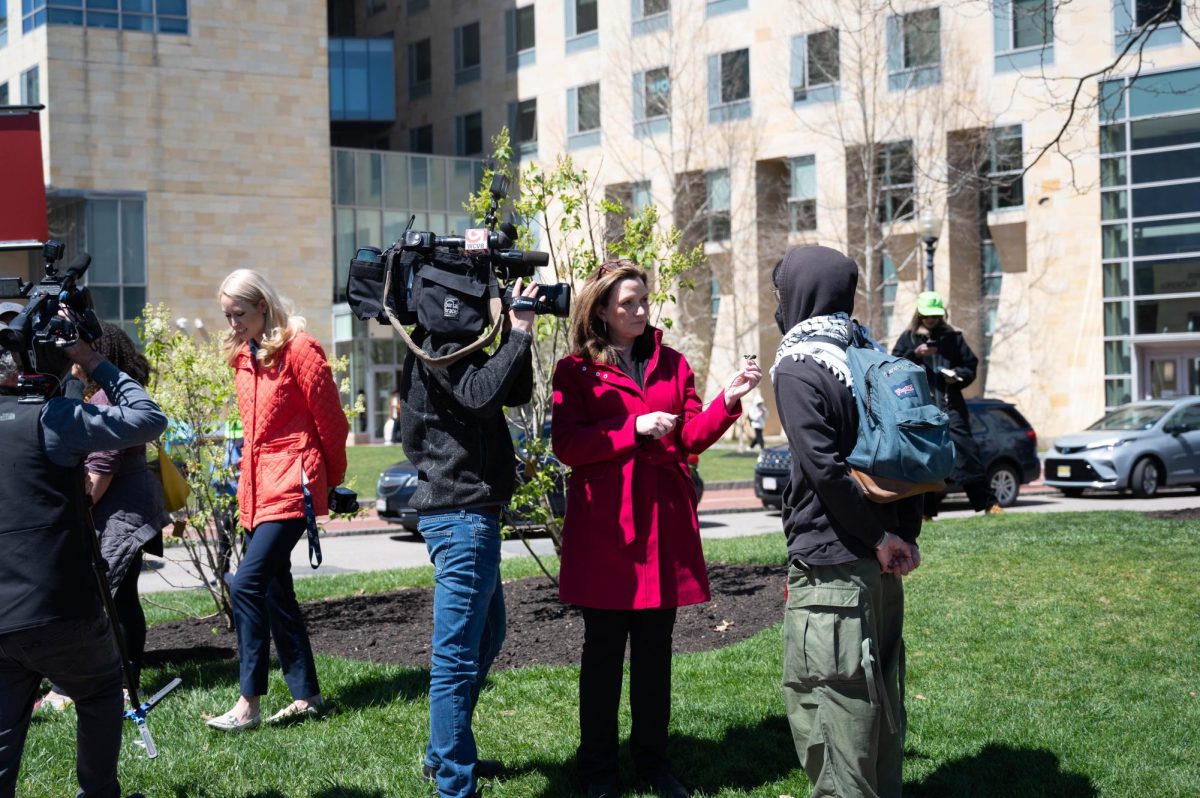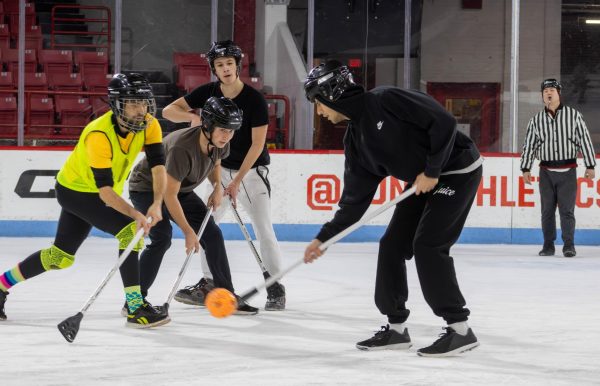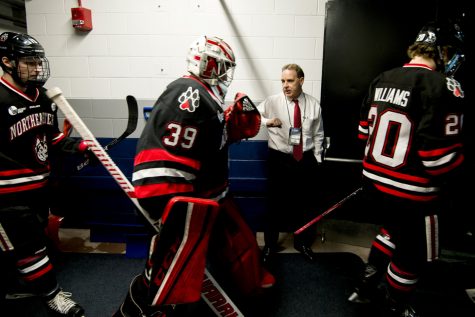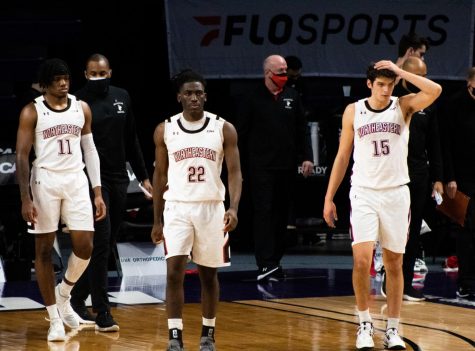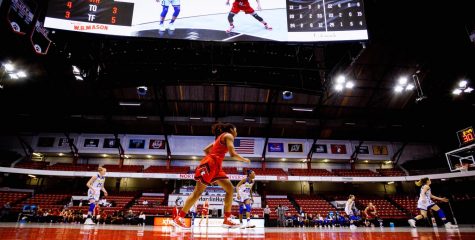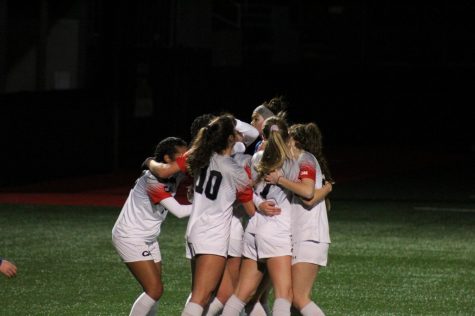Transgender athletes call for equal representation, lack of exclusion in athletics
September 2, 2021
Content warning: This article mentions suicidal ideation.
Efforts by legislators to bar transgender, or trans, individuals from public spaces are ramping up across the country, and with the recent Olympic Games, there is a new onslaught of debate over trans inclusion in sports. Trans athletes are perpetually denied access to compete in athletics due to their gender identity, and the cases of exclusion are growing every day.
Nick Beaulieu, a freshman at Simmons University, was forced to grapple with this reality when he came to his own conclusions about his gender identity.
“I actually played on the boys’ baseball team when I was young,” Beaulieu said. He also played soccer, futsal, lacrosse, basketball, flag football and ran cross country and track throughout his childhood and adolescence.
Now identifying as a trans man, the world that Beaulieu was once so ingrained in has fallen out of reach.
At Simmons, trans athletes are held to the standard put forth by the National Collegiate Athletic Association, or NCAA, which dictates that once a trans person begins hormone replacement therapy, or HRT, they can no longer play in the gender division they do not identify with. For Beaulieu, this means once he begins HRT, he can no longer compete for Simmons’ only women’s track team.
“In sports, we have classifications either male or female for good reasons, but in nature that’s not the case and sex is a continuum, and trying to fix a continuum into two boxes is very difficult,” said Yannis Pitsiladis, professor of sport and exercise science at the University of Brighton in England. Pitsiladis is a member of the International Olympic Committee, or IOC, in its medical and scientific commission and also chair of the science commission of the International Sports Medicine Federation.
Pitsiladis says the real crux of the issue is this: Trans, intersex and non-binary athletes do not fit into the societal boundaries created for cisgender people.
However, many organizations have already made decisions outright banning transgender people from competing. Several states, including Alabama, Montana and Tennessee, have passed laws and regulations banning trans women from women’s athletics, and according to the ACLU, 25 states have proposed similar legislation.
In Beaulieu’s case, staying true to his gender identity meant trading in his lifelong passion of being an athlete. He was once slated to run Division I track and cross country at George Washington University. Now, he has to give up on ever competing with his school.
“Individuals like me will never have the opportunity to reach their full potential as they would if they were born in the right body unless something changes fast, and there is no word for that other than discrimination,” Beaulieu said.
Arbitrary Divisions
After coming out as trans in 2017, Grace McKenzie, now 27 and a tech manager in San Francisco, began transitioning. From her experience, even with her privileges as a white, affluent person, she faced intense scrutiny reentering the world as a trans woman.
“I’m getting that mis-gendering, I’m getting those side glances and it really just sets up this anxious mindset to where even going to the grocery store or riding the subway is this entire endeavor,” McKenzie said.
Trans people experience anxiety and depression at staggering rates compared to cisgender people, data shows. Among the cisgender population, approximately 6.7% of people experience depression and 18% have anxiety. On the other hand, nearly half of people who identify as transgender experience these issues.
“I struggled deeply with depression, my mental illness was horrible [and] I considered suicide multiple times,” McKenzie said.
Over 41% of trans men and women are estimated to have attempted suicide, a rate that is nearly nine times higher than that of cisgender people.
For McKenzie, that first year of hormones and physically transitioning was marred by not only an immensely difficult personal journey, but also a constant need to approach social settings in a completely new way. It was after joining a women’s rugby team that she said she got the lifeline she needed.
“The change in my confidence and the change in the stability I had in my identity over the course of those first few months playing rugby literally saved my life,” McKenzie said.
But for sports like rugby, the IOC and a few other organizations are the benchmark on making decisions regarding inclusion policy. The IOC currently uses hormone testing as the basis for these delineations, but there are studies that have found a negative correlation between athletic performance and testosterone levels.
“There is not a scientific consensus about the relationship between testosterone and athletic performance,” said Travers, a professor of sociology at Simon Fraser University and author of the 2018 book “The Trans Generation: How Trans Kids (and Their Parents) Are Creating a Gender Revolution.”
Hormone testing was used in the case of Caster Semenya, a South African runner whose sex was called into question after her victory in the 2009 World Championships. She is currently appealing the decision of the International Association of Athletics Federations to make her ineligible to compete.
It is worth noting that Semenya is not only a strong female athlete, but also a strong Black female athlete. By many accounts, this is one of the reasons she was violated so publically by World Athletics, an association that serves as the governing body for sports worldwide .
“It is often Black and brown women who are subject to the testing more often, and so sex testing has always been used to police women who do not perform femininity in white western ideals,” said Britni de la Cretaz, a freelance writer on issues relating to sports, gender, culture and queerness.
The fight for trans inclusion in athletics is not one isolated to discussions of gender. People’s identities intersect and overlap, and transphobia is amplified when the individual is also a person of color.
“What we have to keep in mind is this rise in anti-trans bills is going to disproportionately affect people of color,” said Ben Skinner, a global governance student at the Balsillie School of International Affairs in Ontario and rugby player who identifies as trans male.
What’s at Stake
Athletes at the elite level often have genetic gifts of height, speed and strength, but when those same features are exhibited by a trans person, they’re often characterized as unfair.
“There’s so many differences in people, and athletes aren’t normal, good athletes have something that allows them to stand out,” said Vikki Krane, professor of applied sport psychology at Bowling Green State University and author of “Sex, Gender, and Sexuality in Sport: Queer Inquiries.”
Roughly 1% of people are trans, and even less of that percentage participate in athletics, so with such a small community, oftentimes false narratives surrounding trans athletes are produced.
“The public’s opinion has been informed by that fear-mongering that happens that there’s all these trans girls beating up all these biological females, and I’m not aware of one case of that,” Pitsiladis said.
Much of the story conjured about trans athletes paints them as the “other” and reinforces stereotypes and prejudices against them that reinforce the bans in the first place, experts like Krane say. The result: a dangerous environment for trans athletes who are forced to grapple with misconceptions that they are not only unnaturally affecting their sport, but also doing so with hostility toward other athletes.
“There’s no person that would put themselves through the amount of discrimination that trans people receive in order to get some advantage in sport,” said Eleanor Fisher, a first-year environmental engineering and landscape architecture student and varsity soccer player at Northeastern University who supports trans participation.
For many people, participating in athletics can be a uniquely fulfilling experience, and for someone who is trans, it could potentially provide a community of support.
And while these athletic bans are far from the only campaigns happening to take away liberties from trans people, it is a key front to fight to protect people that deserve to play.
“We need to help literally save the lives of all the kids who will feel like they have no other option but to end their own lives due to this kind of legislation,” Beaulieu said.




